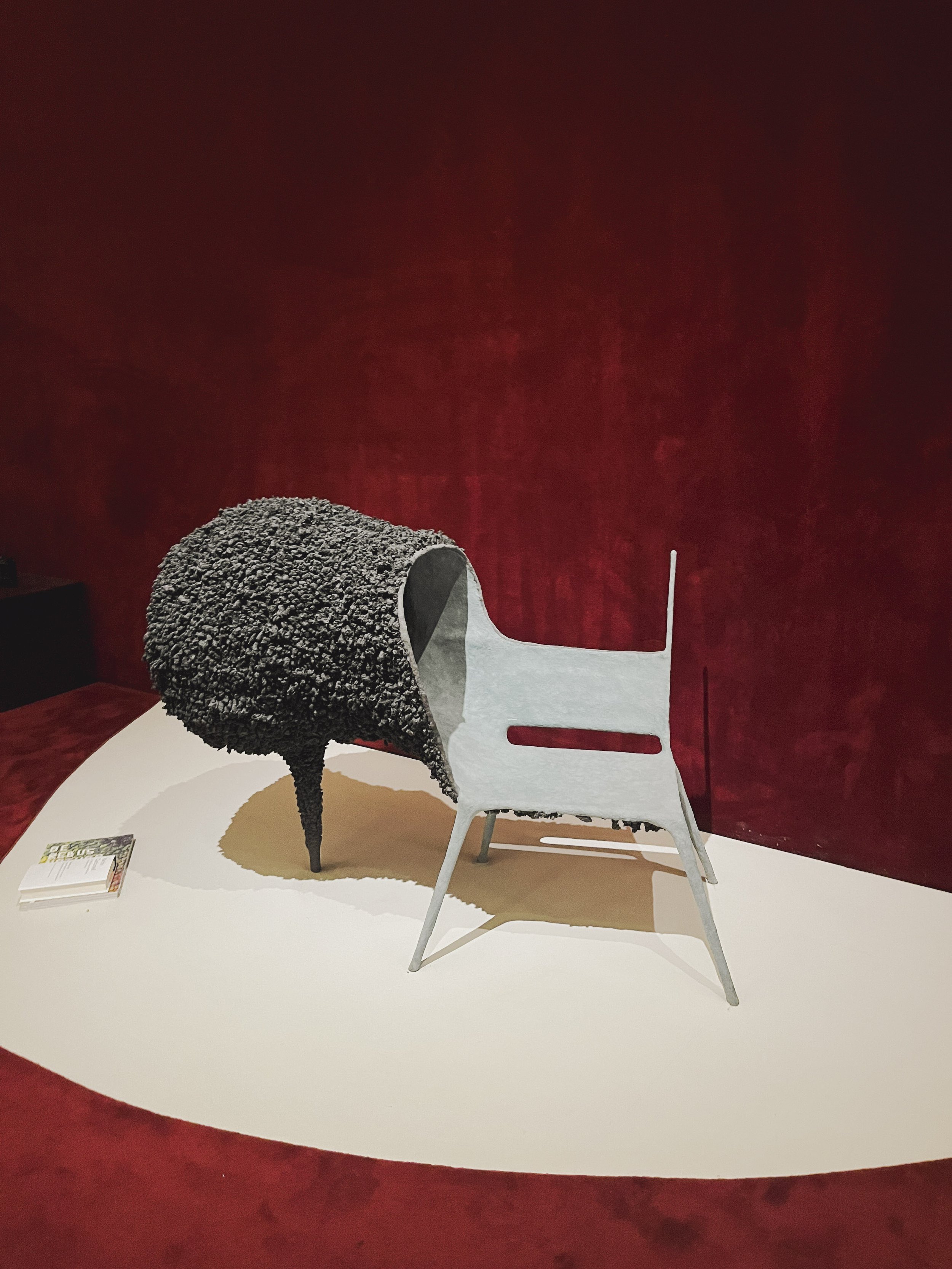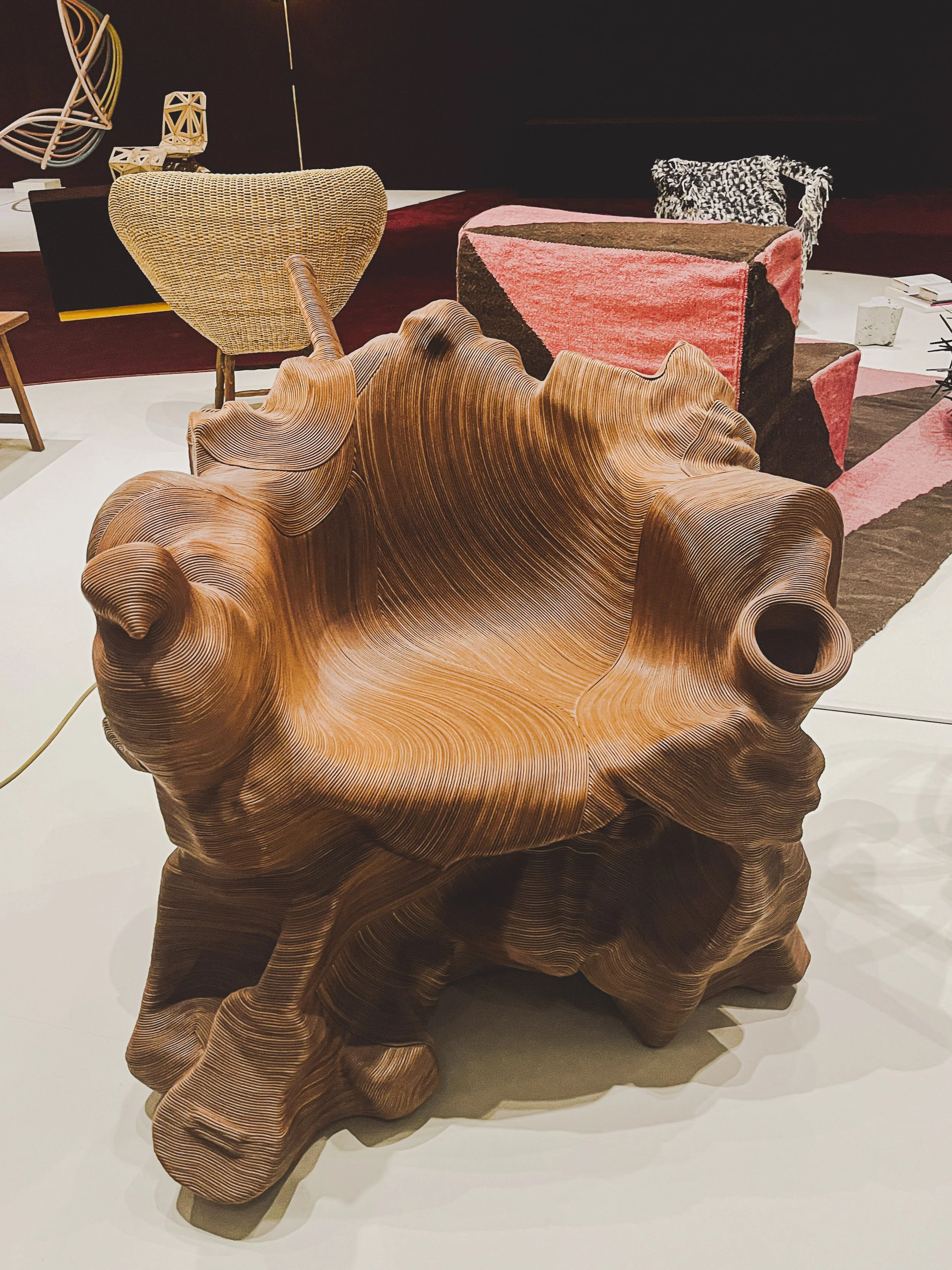Not for (Just) Sitting
“Conversation Pieces” at SFMOMA challenges the division of furniture and art
For contemporary designers, furniture has outlived its solely utilitarian existence. The pandemic has spurred many to rethink the design and furnishing of their living space, prompting a larger reevaluation of the purpose behind furniture.
Traditionally, furniture is often conceived of as purely functional. The category defines pieces as having a predetermined aesthetic (mid-century modern, minimalist, Victorian, etc.) and serving a discrete purpose. Forty-five leading designers have set out to challenge that notion at the San Francisco Museum of Modern Art (SFMoMA).
“Conversation Pieces,” where viewers can look but not sit, chronicles a departure from strict prescriptions of furniture. The new exhibit from the renowned museum presents a reframing and integration of design and art. It posits that furniture can be artful and meaningful as an end, worthy of the same contemplation and reverence as traditional art.
Velvety carpeting runs up the gallery walls, inviting visitors to imagine each piece as within a home rather than in an art gallery. Hardcovers fashioned into explanatory plaques lay atop texts related to each designer. Forty-five unique works are arranged in clusters throughout the space, with bright pops of color and pattern filling the showroom.
Fit for a date or outing with friends, the exhibit invites visitors to use the art and accompanying questions as conversation starters. Artists on display were recorded talking about the process and inspiration behind their work, which viewers can consider as they peruse the exhibit.
Some of the featured artists use specific patterns and stylings from their cultures to honor historically suppressed aesthetics. Other contributors promote sustainability by rejecting industrial processing methods.
Each approach to contemporary furniture offers an inroad to discussion. SFMoMA asks onlookers a few of these probing questions regarding Shiro Kuramata’s “Miss Blanche,” a translucent chair with cylindrical purple legs and roses cast in resin on the seat and arms: “What do you think makes an object beautiful? Does something need to be beautiful in order to be called a work of art?” Like a beautiful painting or striking sculpture, each chair, lamp and chandelier on display can be considered just as deeply.
Stationed right at the entrance, “One Man” by Nacho Carbonell offers a soft light-blue chair for the sitter, accompanied by a shaggy, stone-blue extension of form, supported by a 5th leg. As the title suggests, this work begs the question of the space held, but uninhabited, by the user.
Liam Lee’s “Untitled 06” is a brightly colored purple and yellow chair. The piece resembles upwards, coral-like growth; it feels at once otherworldly and alive. Sitting directly to its left is “Species II,” a piece by Fredrikson Stallard. Instead of resembling a seat sculpted for the human body, Stallard opts for a cavernous, jagged slice of a quasi-lunar rock formation. Colored a rich, dark purple, this is a chair fit for a sci-fi council of omniscient aliens.
Maarten Baas’ “Clay” brings to life an imperfect, sculpted form. The undeniably human, doodle-like quality of the chair makes the piece distinctly inviting and artful, rejecting in nature a machine-perfected look. This is a similarity among many of the works–a conscious departure from furniture that looks mass-produced or highly industrial.
“Savage” by Jay Sae Jung Oh blends in iconography through swirling bands of leather and plastic. Loosely-defined forms are seamlessly molded into the piece, suggesting that the chair itself holds memory and personality of its own.
Each work communicates with a distinct visual language, much like the other art throughout SFMOMA. For furniture especially, those same languages are often not accessed outside of the bubble of museums and art galleries. “Conversation Pieces” hopes to let that dialogue flow outside of the exhibit’s walls.
“Conversation Pieces” is on display at SFMoMA until June 25th, 2023.


